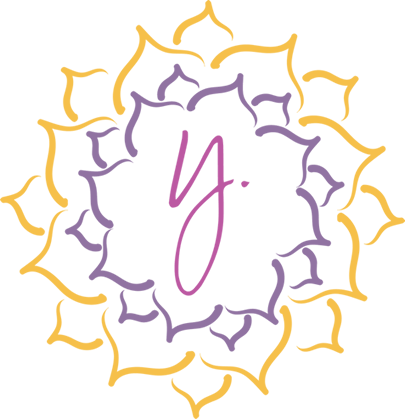It’s time to take an active role in your beliefs.
As an older man, Albert Einstein recalled that he often imagined what it would be like to think like God when he was a child. As he grew into the theoretical physicist he ultimately became, those childhood imaginings evolved into the intention he set for his life: think like God. That was how Einstein was able to ask the questions that he did, tap into a connection with something greater than himself, and produce the theory of relativity.
But guess what? You can think like Einstein too.
While there’s no record of Einstein meditating, he played the violin as a meditative practice. Whenever he couldn’t solve a problem, he deliberately decided to let go of conscious thought and let his mind rest on the music. By allowing the preconceived thoughts and beliefs of his conscious mind to fade into background noise while drawing his subconscious mind forward, he could access information and ideas that might not have ever broken through the noise of his conscious mind.
By doing so, Einstein wasn’t only able to change his own beliefs—he transformed the ideas of the entire world.
Approximately eleven million bits of information bombard the human brain each second. But, only about fifty bits of that information get processed by the conscious mind. The brain is designed to filter out all the other millions of bits of information; otherwise, we wouldn’t be able to function as humans. And those fifty bits you do take in are processed through your beliefs.
In other words, you see what you believe.
If you want to better understand your true beliefs, just consider how they’ve formed the circumstances of your life. A belief is just a thought you keep thinking for so long it’s become subconscious, whether there’s concrete evidence for it or not—and, often, it informs your actions and decisions.
If you’ve identified a belief that is no longer serving you, or you want to open your mind to more expanded consciousness, Einstein-style, you can take active steps to begin to change your beliefs. Here are four ways how:
- Repetition.
After the age of seven, the primary way humans acquire subconscious patterning and create habits is through repetition—by experiencing the pattern you’re trying to build. In the beginning, habit-forming can be difficult, especially if the habit you’re trying to develop is novel, uncomfortable, or in conflict with your temporary desires. But habits are only formed by repeating a behavior, so practicing and repeating is vital. - Theta brainwave introduction.
Theta brainwaves are most active during a hypnotic state. In essence, this is how you formed your beliefs and behaviors during the first seven years of life, before increased brainwave activity and conscious thought kicked in. The mind operates in a low vibrational frequency during theta brainwave state—just like hypnosis or a near-sleep. The theta brain wave state is very receptive. By introducing new programming (aka thoughts and beliefs) during this state—just before falling asleep or immediately upon waking up in the morning—a new pattern is more likely to be formed. Consider checking out theta brainwave music to get started. - Energy psychology.
There are many energy psychology modalities, each with varying degrees of scientific, psychological, and anecdotal evidence supporting them. “Energy medicine” has been practiced around the world for millennia. But, in recent years—particularly in the West—new energy psychology-inspired belief modification programs are being used to engage the processing powers of the brain, creating “super-learning” opportunities for altering subconscious programming. - A traumatic or “high-impact” life event or change.
If you or anyone you know struggles with PTS, C-PTSD, or even been diagnosed with a terminal illness, you’re probably familiar with the ways trauma can transform someone’s belief system—sometimes, practically overnight. After a psychologically traumatic or high-impact life event, a person often rapidly rewrites the subconscious programs from which they were operating. While this change may not necessarily be bad, nobody wants to experience a traumatic life event to change a belief system or form a new habit.
Other than number 4, each of these methods of belief change has roots in the principles and practices of mindfulness. Shutting up and sitting requires repetition—ideally every day, for at least a few minutes. Meditation activates a theta brainwave state, allowing you to drop deeper into the seat of yourself and find the pause between your thoughts. Mindfulness is an invitation to access higher-vibrational energy, transforming the way your thoughts and beliefs impact your body.
No matter how uncomfortable silent stillness might be at first, especially if you’re just starting to form the habit, by sitting often enough, you will discover the freedom to release harmful thoughts and choose different ones, changing your beliefs in the process.
You can absolutely rewrite any destructive programs that occupy your subconscious field and limit your beliefs. But you must be fully engaged with the practice and fully present to your harmful programs to successfully transform them.
You are not a victim of anything other than your subconscious programming: change the programs, change your beliefs and behaviors, change your life.
If you do the work, your subconscious programs will evolve to match the dreams and desires of your conscious mind, and your life will move into greater alignment.
Want to learn more? There’s a book for that! Click here to take the first step towards greater awakening, awareness, self-love, and personal transformation.
If you enjoy reading Shut Up & Sit, then you’ll love receiving weekly love letters from Yedda! Each week you’ll get stories, wisdom tools, and mini doses of mindfulness delivered straight to your inbox. Plus, you’ll be the first to know about upcoming events, workshops, new products, and more.
